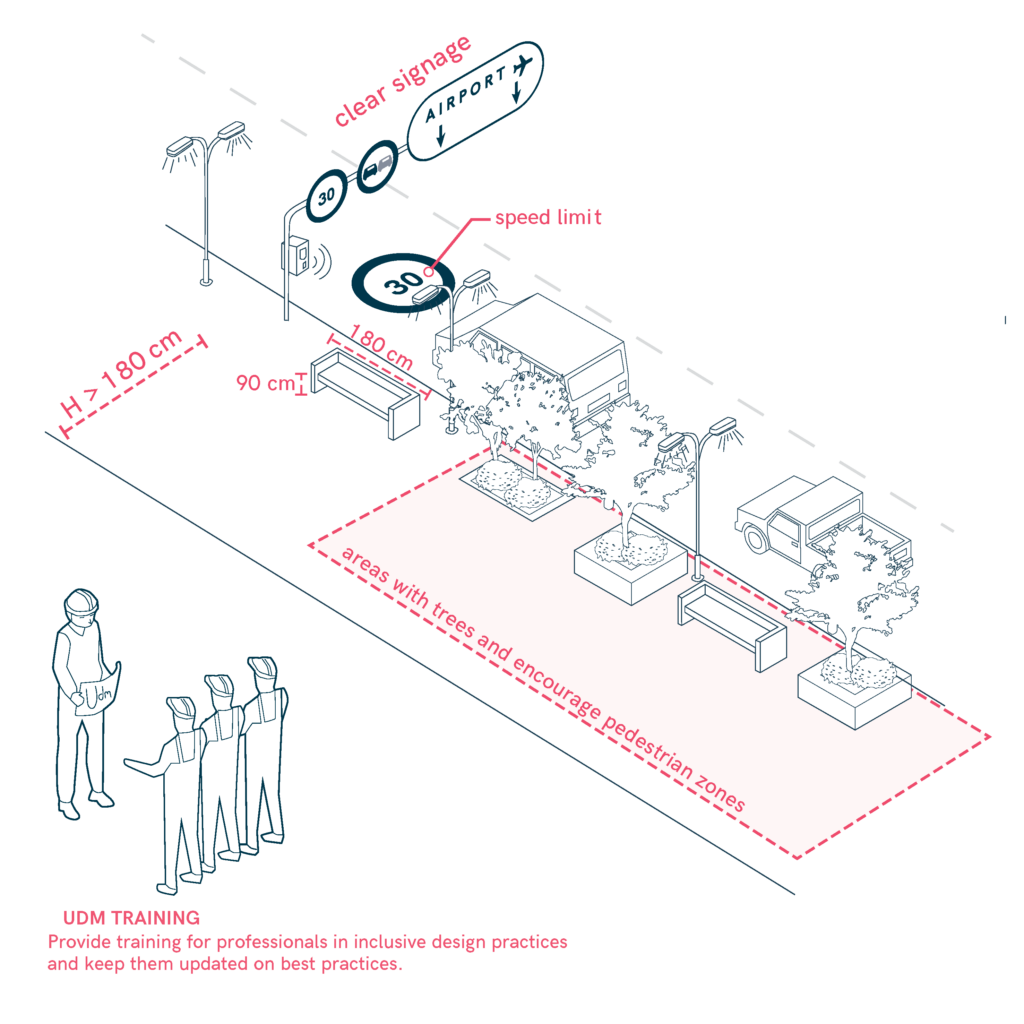Urban Mobility and Roadway Design
Roadways and urban infrastructure should be designed with inclusivity in mind to ensure safe and efficient travel for pedestrians, cyclists, and motorists alike. By incorporating road calming measures, clear signage, and accessible routes, we create a safer and more welcoming environment for everyone, while reducing traffic speeds and improving visibility for all users, especially vulnerable groups.

- Create wide sidewalks (at least 1.80 m) with street trees and seating to encourage pedestrian movement.
- Narrow traffic lanes and lower speed limits, incorporating appropriate signage to ensure safety.
- Introduce shaded areas with trees and encourage pedestrian zones with seating and recreational elements.
- Use high-contrast, clear signage with large lettering and multilingual options to assist diverse users.
- Ensure proper lighting for better visibility, especially at night and during poor weather conditions, to improve safety.
- Implement universal design principles to create roads usable by all, ensuring they comply with accessibility standards.
- Use smart traffic systems to enhance road safety and navigation, particularly for individuals with disabilities.
- Provide training for professionals in inclusive design practices and keep them updated on best practices.
Sources
- https://accessible-eu-centre.ec.europa.eu/content-corner/digital-library/en-172102021-accessibility-and-usability-built-environment-functional-requirements_en
- https://www.iso.org/standard/71860.html
- https://www.t-l.ch/collectivites/guide-des-amenagements-pour-les-transports-publics-routiers-tl/
- https://www.leitfadenbarrierefreiesbauen.de/fileadmin/downloads/archiv/barrierefreies_bauen_leitfaden_en_bf_version2.pdf
- https://www.vitoria-gasteiz.org/http/wb021/contenidosEstaticos/especial/cea/20190917/Avance_PMSEP_2020_2030.pdf
- https://www.punt6.org/es/books/espacios-para-la-vida-cotidiana/
- Carers
- Children
- Cognitive
- Cognitive abilities
- Decolonial perspective
- Digital
- Digital barrier
- Enviroment
- Environmental
- Gender and generations
- Gender perspective
- Hearing impairment
- Low-education
- Low-income
- Older people
- Other
- Physical abilities and features
- Sensory and Physical
- Socioeconomic
- Visual impairment